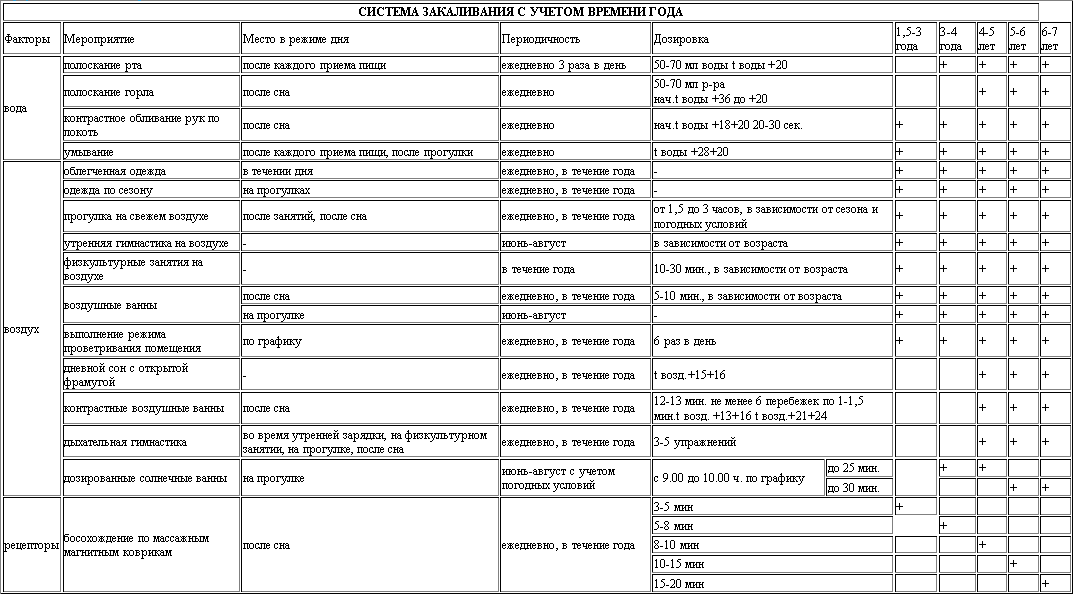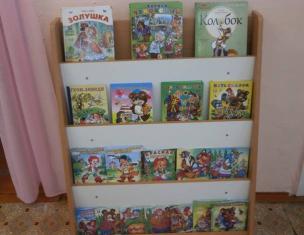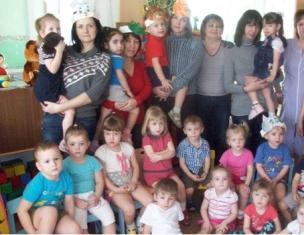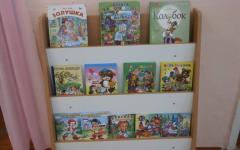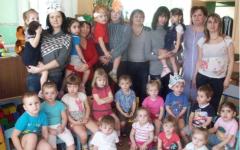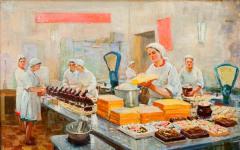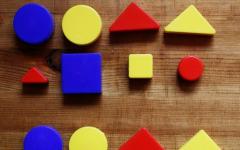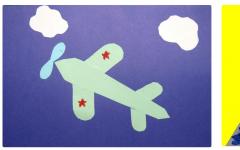The main tasks of the kindergarten in physical education of preschoolers are:
Protection and strengthening the health of children The formation of the vital motor skills and the skills of the child in accordance with its individual characteristics, the development of physical qualities;
Creating conditions for the realization of the needs of children in motor activity;
Education of the need for a healthy lifestyle;
Ensuring physical and mental well-being.
Successful solution of the tasks assigned only subject to the integrated use of all physical education tools: rational regime, nutrition, hardening (in everyday life; special order measures) and movement (morning gymnastics, educational exercises, sports games, physical education). And to ensure the education of a healthy child, work in our kindergarten is built in several directions:
Creating conditions for physical development and reducing the incidence of children
Increase the pedagogical skill and business skills of kindergarten educators
Comprehensive solution of physical culture and health problems in contact with medical workers
Educating a healthy child with joint efforts of kindergarten and family.
For the full physical development of children, the realization of the need for movement in kindergarten has created certain conditions. The groups have created corners of physical culture, where various physical benefits are located, including for the prevention of flatfoot. The kindergarten is equipped with a physical consuming ground for physical education with a variety of physical equipment. All this increases the interest of kids to physical education, increases the effectiveness of classes, allows children to exercise in all types of major movements in the room. On the territory of the kindergarten there is a sports ground with "obstacles' strips" (knots, arcs, targets for entering the goal, pit for long jumps), gymnastic walls, football gates. For the purpose of recreational and medical and preventive work with children, we have developed a system of preventive and corrective work.
The system of preventive and corrective work on the improvement of preschoolers
Prevention
1. Point massage by the method of Umansky
2. Complexes of exercises for the prevention of violations of violations during classes
3. Gymnastics with elements of Hatha Yoga
4. Complexes for prevention flatfoot
5. Complexes for the prevention of posture disorders + sleep without pastes and pillows
6. Respiratory gymnastics
7. Removing mental fatigue during classes (relaxation pauses, physical attacks, ears massages)
8. Walks + dynamic hour
9. Hardening: Sleep without Main Walking barefoot Cleaning of teeth and riding the oral cavity Extensive washness Riga Hardening Method (Topging on a spike rug, along a wet cloth moistened in a salt solution + rinse of the oral cavity by iodine-brine or herbal influenza)
10. Optimal motor mode
Correction
Exercises for correction flatfoot
Events for the period of increased incidence of influenza and ac
1. Onion beverage
2. Onions, garlic
3. Rinse of the oral cavity with garlic infusion before walk
Special attention in the day of the day we pay challenging procedures that promote health and reduce incidence.
Hardening will be effective only when it is provided within the entire time of stay of the child in kindergarten. Therefore, we observe:
Clear organization of thermal and air regime
Rational non-volatile children's clothing
Compliance with the mode of walks at all times of the year
Barefoot exercises Morning gymnastics and physical education
purpose
: Prevention and sanitation of the oral cavity with angina, inflammatory oral processes
Cooking
: 1 garlic clove on 1 cup of water. Garlic to smoke, fill over cooled boiled water and insist 1 hour. The solution is used for 2 hours after cooking.
Guidelines
: Apply as a drug (known since the time of the hippocrates), which cleans blood, kills pathogenic microbes, as a means against Orza, ORVI. Rinse the throat, who needs to be dripped into the nose. Apply from October 1 to April 30 daily after classes, before going to walk.
A complex of health events for age groups
Early age groups
1. Reception of children in a group with a mandatory inspection, thermometry and identification of parental complaints.
2. Morning gymnastics - 8.10
3. Point massage in the game form
4. Gradual Rinse Rinse
5. Walk: Day 10.00 - 11.10; Evening 17.30 - 18.30
6. Optimal motor mode
7. Before walking a rinsing (reception inside 1C.L.) garlic infusion
8. "Garlic" Kinder (from October to April)
9. Fitoncides (onions, garlic)
11. Sleep without Mains and Pillows
12. Gymnastics in bed with breathing exercises after sleeping
13. Hardening: Walking on a rug with spikes, on a ribbed board, a butt rug, on the floor of the barefoot with elements of prevention flatfoot.
2 Junior Group 1. Reception of children on the street (at temperatures above -15 °)
2. Morning gymnastics in group 8.15
3. Point massage according to the method of Umansky before or after breakfast
4. Rinse the oral cavity after breakfast, lunch, dinner. Gradual teeth cleaning
5. Fizkultminutki during classes, prevention of visual impairment
6. Physical sessions (in socks) + dynamic hour for a walk 1 time per week
8. "Garlic" Kinder
9. Fitoncides (onions, garlic)
10. Onion beverage before dinner
11. Walking: daytime 10.30-11.40; Evening 17.45-18.30
13. Sleep without Mains and Pillows
14. Respiratory gymnastics in bed
15. Exercises for the prevention of flatfoot + individual work on the correction of flatfoot and foot flattering (from the 3rd quarter)
16. Hardening: Riga Hardening Method
17. Elements of extensive washing
18. After a midnight, rinse the mouth of the mouth of herbs
Medium group
1. Reception of children on the street (at temperatures up -15 °)
3. Point massage according to the method of Umansky to breakfast.
6. Fizkultminutki during classes, prevention of visual impairment
7. Before walking the rinsing of the oral cavity with garlic infusion (from October to April)
8. Garlic "Kinder"
9. Fitoncides (onions, garlic)
10. Low drink during lunch
11. Walking: day 10.15 - 11.50; Evening 17.30 - 18.30
12. Optimal motor mode
13. Sleep without Mains and Pillows
Senior preschool age
1. Reception of children on the street (at temperatures up -15 ° -18 °)
2. Morning gymnastics (from May to October - on the street, from October to April - in the chart in the chart)
3. Point massage by Umansky method before breakfast
4. Cleaning the teeth after breakfast and rinse the oral cavity after lunch
5. Physical classes in the hall (in socks) + dynamic hour for a walk 1 time per week
6. Fizkultminthki during classes, prevention of violation of vision, massage of ear-sinks
7. Before walking the rinsing of the oral cavity with garlic infusion (from October to April)
8. Garlic "Kinder" 9. Phitoncides (onions, garlic)
10. Low drink during lunch
11. Walking: Morning 7.00 - 8.00; Day 10.45 - 12.10; Evening 17.45 - 18.30
12. Optimal motor mode
13. Sleep without Mains and Pillows
14. Respiratory gymnastics in beds
15. Hardening: Riga method
16. Extensive washness, walking barefoot
17. Exercises for the prevention of flatfoot + individual work on the correction of flatfoot and foot flattering
18. After a midnight, rinse the mouth of the mouth of herbs
Riga processing method
On a rubber rug with spikes, dressed in a cover, moistened with a 10% solution of the table salt (1 kg of salt on the water bucket), the baby becomes barefoot and walks on the spot (starting from 5-7 to 16 seconds). After that, the child rises on a dry rug and grows on it for 15 seconds. Then with water from under the tap wipe hands, neck, face.
Starting from the middle group, children welt their mouth with an iodine salt solution (per 1 liter of water 1 tbsp. Spoon of salt and 3-4 drops of iodine). Water room temperature.
This method is recommended after daytime sleep or after charging.
Some hardening techniques:
1. Extensive washing.
The child should:
Open a crane with water, wet the right palm and spend it from the tips of the fingers to the elbow of the left hand, say "times"; The same to do with your left hand.
Wayed both palms, put them from behind on the neck and spend them at the same time to the chin, say "times."
Wet the right palm and make a circular movement along the top of the chest, say "times."
Wet both palms and wash your face.
Rinse, "squeeze" both hands, wipe dry.
Note.
After some time, the duration of the procedure increases, namely: every hand, as well as the neck and chest, children are twice, pronouncing "times, two", etc.
2. Sleep without brake.
It is held all year round. In case of temperature decrease due to interruptions in heating or established cold weather, warm socks should be prepared on their feet and second blankets. Of course, the temperature in the bedroom should not be lower than +14 degrees Celsius.
When working with children, it is necessary to comply with the basic principles of hardening:
Implementation of hardening, provided that the child is healthy
Invalidation of hardware procedures if the child has negative emotional reactions (fear, crying, anxiety)
The intensity of the hardening procedures increases gradually from growing to more intense) with expansion of exposure areas and an increase in the time of hardening
Systemativity and constancy of hardening (and not on occasion).
We have introduced an ordering note, where educators are taking into account the hardening of children, using the recommendations of the doctor (honey. Taps) is definitely, the development of movements and physical culture of children in physical education is of particular importance in education. Moreover, in each age period, physical education classes have different focus:
Little children, they must be enjoyed, teach them to navigate them in space, to work properly with equipment, teach elementary insurance techniques
At middle age - to develop physical qualities (primarily endurance and power)
In the senior groups - to form a need in motion, develop motor abilities and independence, etc.
Therefore, we are trying to use a variety of physical education options:
Classes on the traditional scheme
Classes consisting of a set of movable games of large, medium and low intensity
Training in the main types of movements
Rhythmic gymnastics
Competitions, where children during different relay two teams reveal winners
Studies, during which children surrender physical rules
Scene-gaming
